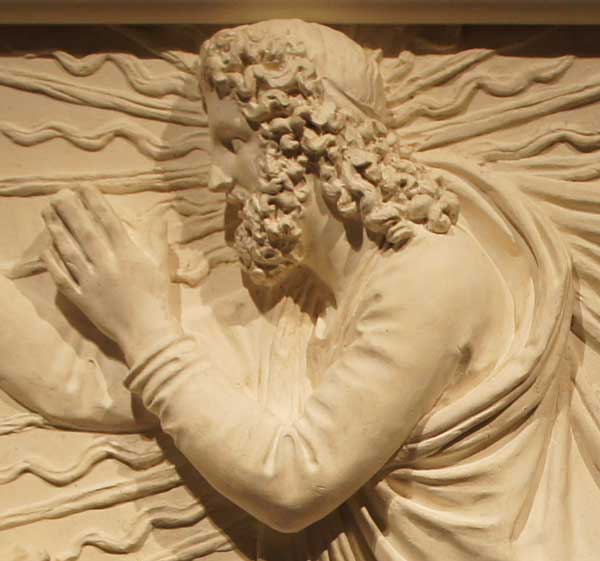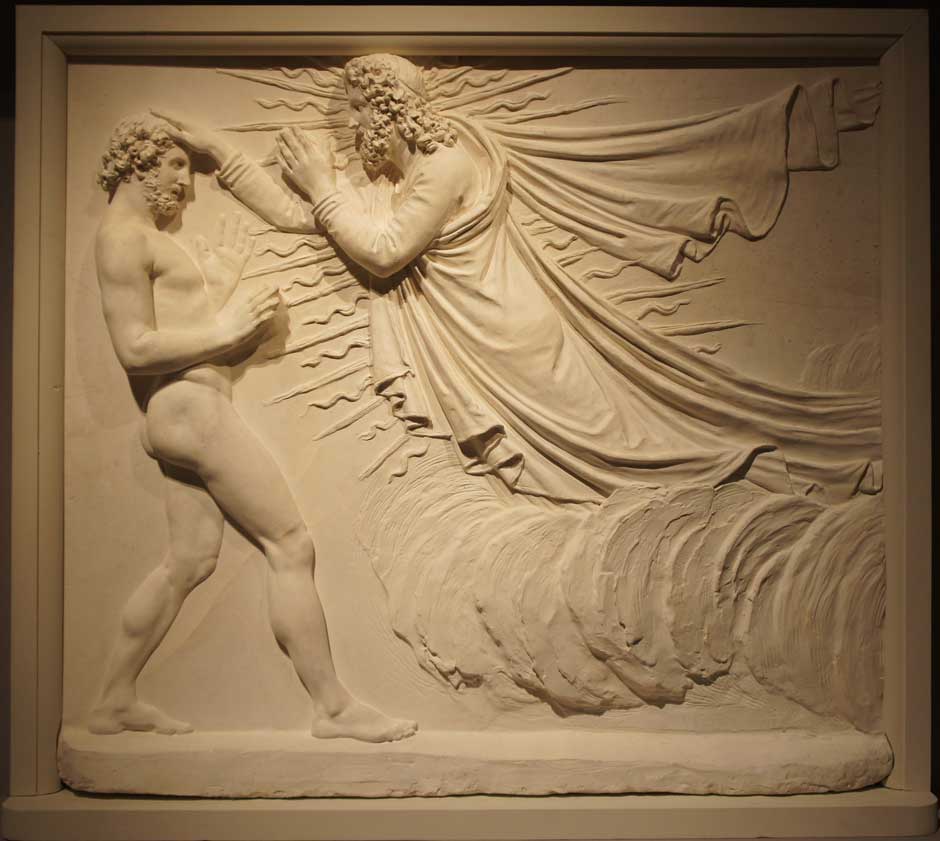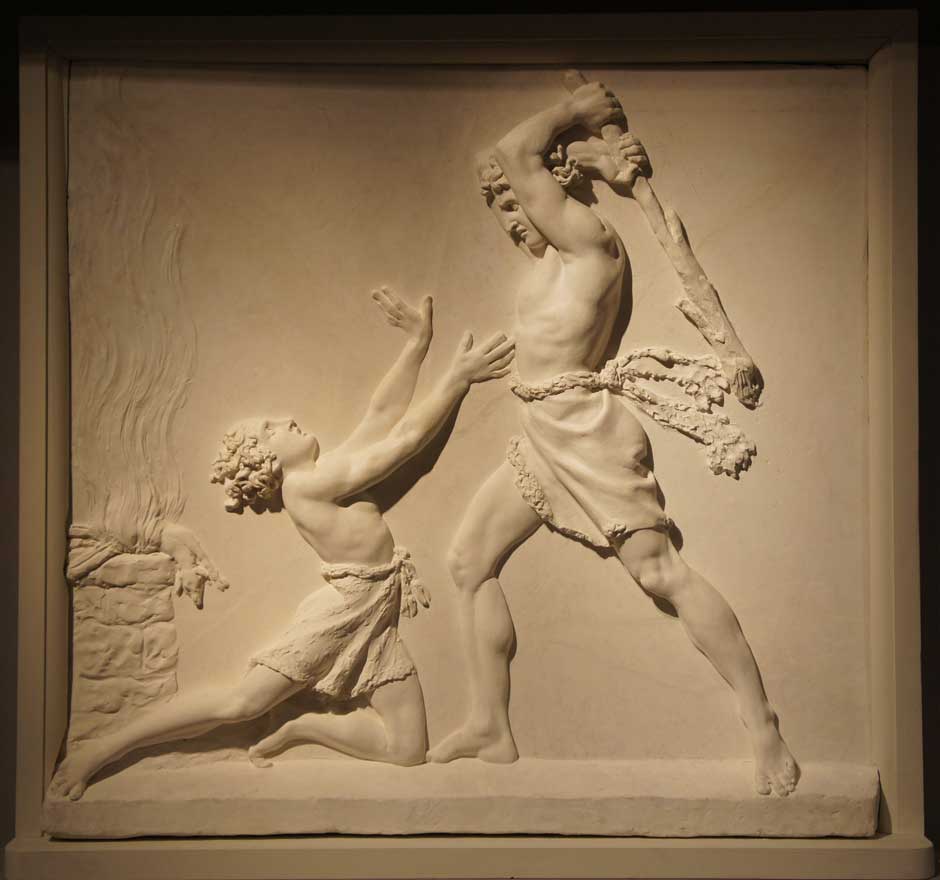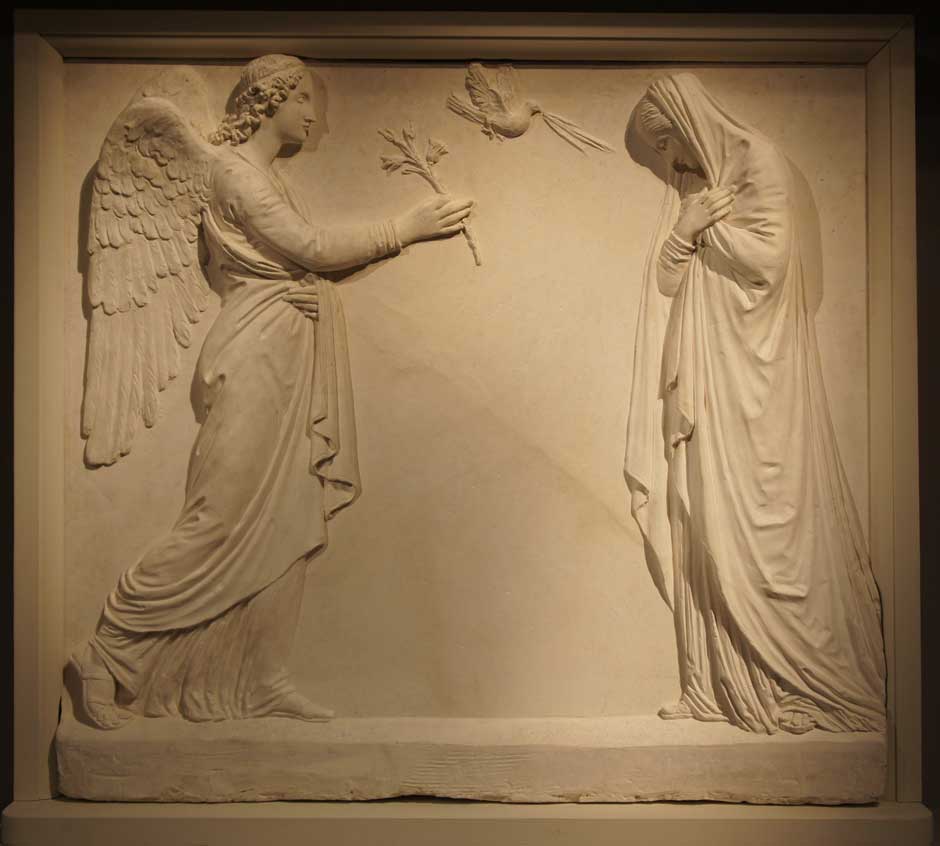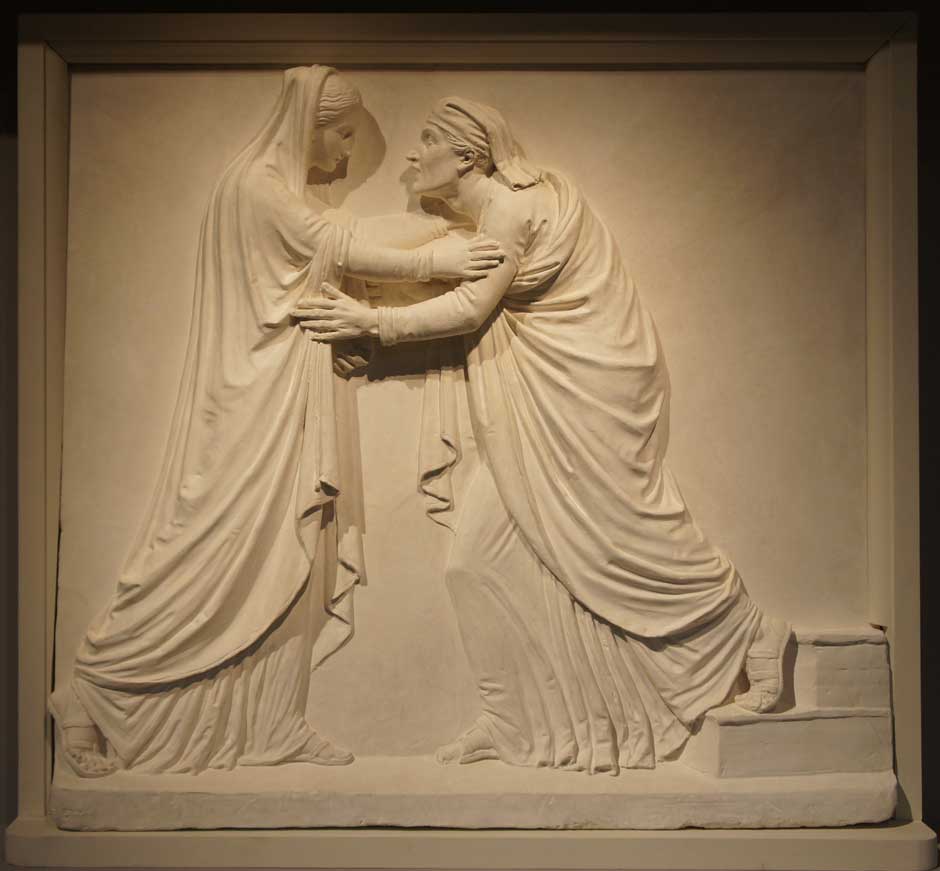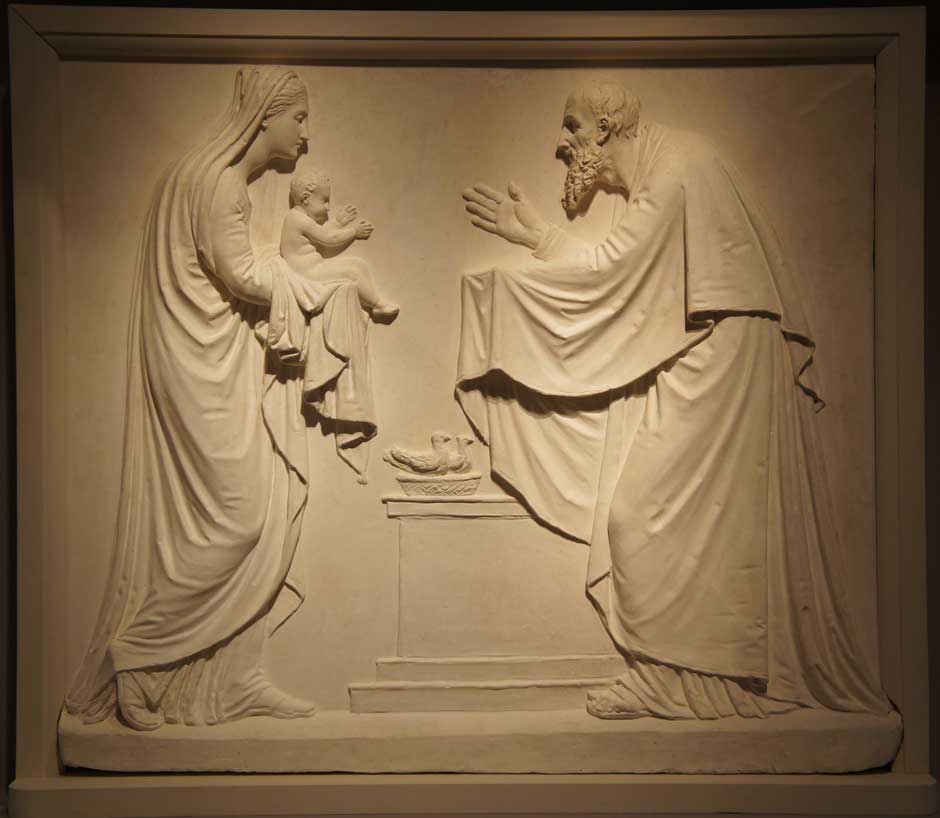Canova was the most celebrated artist in Europe in the early nineteenth century, and yet he has rarely been the subject of an exhibition in America, nor has it been easy to see many major works by him in this country. Until now. The Metropolitan Museum of Art in New York is presently home to a small but serenely beautiful show, “Antonio Canova: The Seven Last Works.” The exhibition features the seven plaster models for reliefs, which Canova was working on at the time of his death in 1822.
The models, all depicting scenes from the Bible, were to serve for metopes on the entablature of the Tempio Canoviano, the church and mausoleum the artist planned for Possagno, his home town in the foot hills northwest of Venice. The seven reliefs divide into three groups. The first two are creation scenes: The Creation of the World and The Creation of Adam. The next two are scenes of sacrifice and violence: Cain and Abel and The Sacrifice of Isaac. The last three are Marian stories from the New Testament: The Annunciation, The Visitation, and The Presentation in the Temple.
The works divide by style as well. They are a summation of the origins and possibilities of Canova’s artistry. Busy and graphic, the creation scenes evoke the works of Gavin Hamilton (1723–1798), the Scottish painter who first convinced Canova to abandon the Rococo and take up Neo-Classicism. The scenes of violence instead show Canova’s emulation of the heroic mode of Greek and Roman art, especially Attic vase painting and the Elgin marbles, which Canova in 1815 helped to identify as works of Phidias. Lastly, the Marian scenes bespeak Canova’s love for Donatello, Luca della Robbia, and the other Florentine sculptors of the fifteenth century.
It is the Marian scenes that especially make the show noteworthy. In these Canova reduced the depiction of narrative, character, and setting to a bare minimum; they have a calm sublimity that is moving to behold.
“Antonio Canova: The Seven Last Works” is on view at the Metropolitan Museum through April 27.


